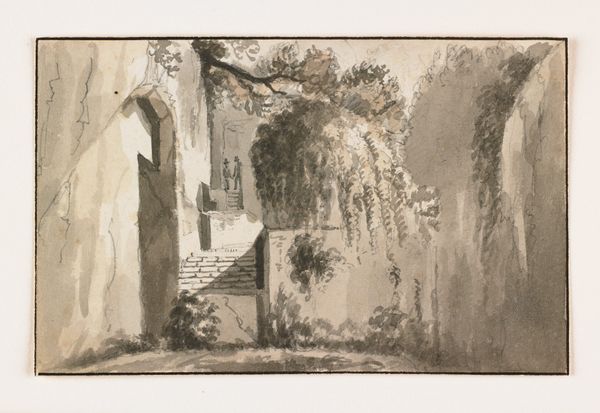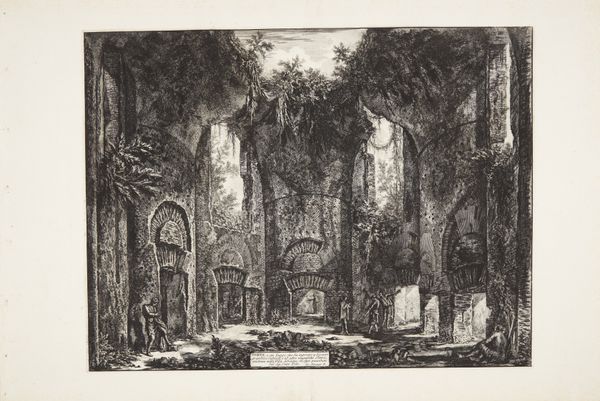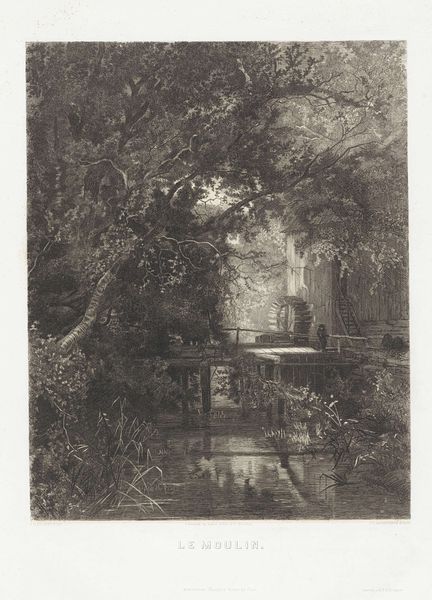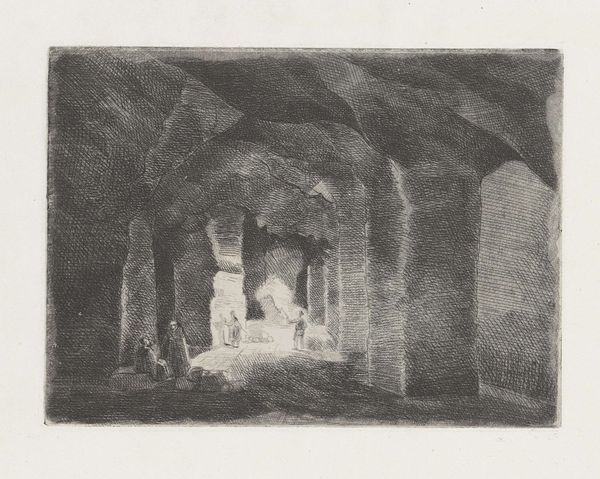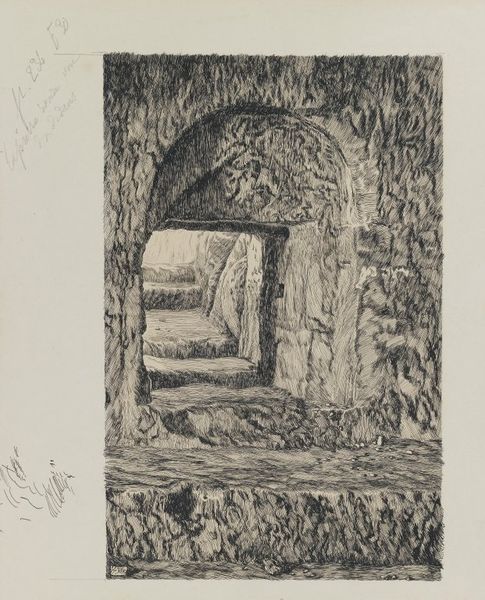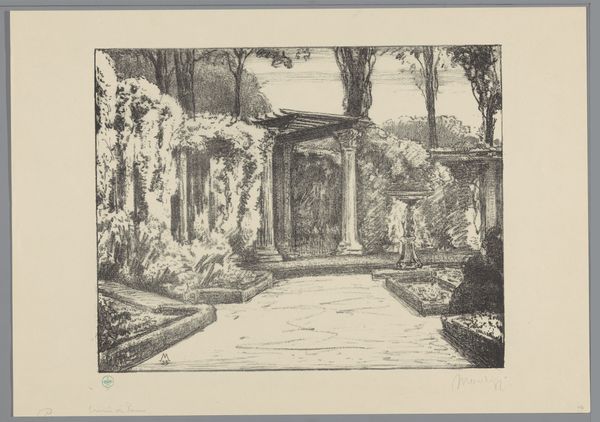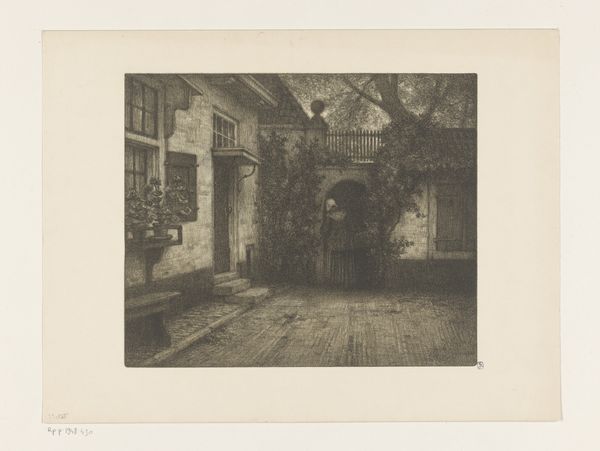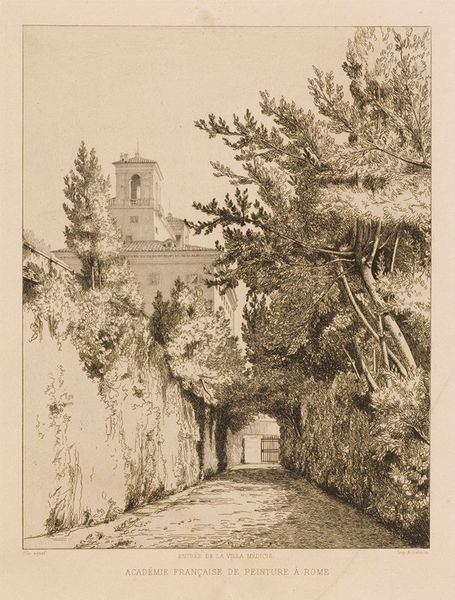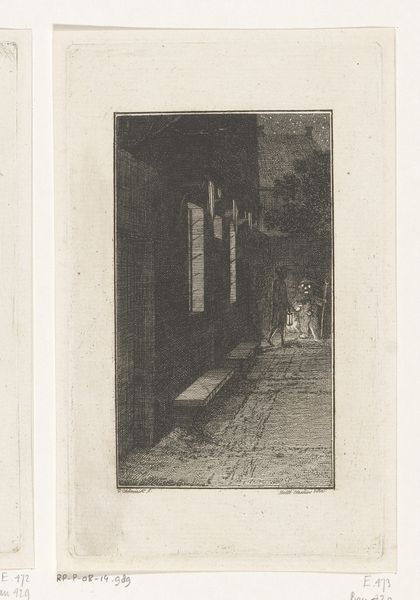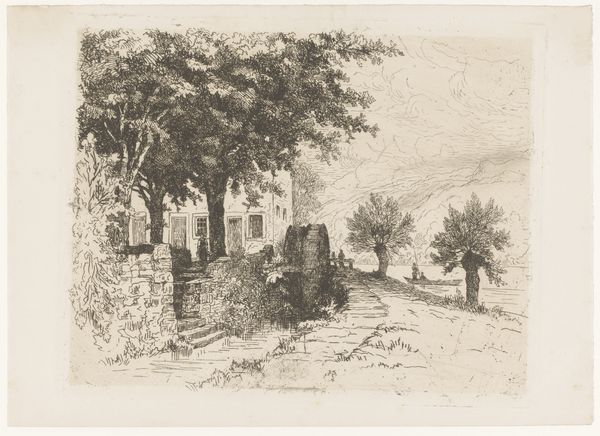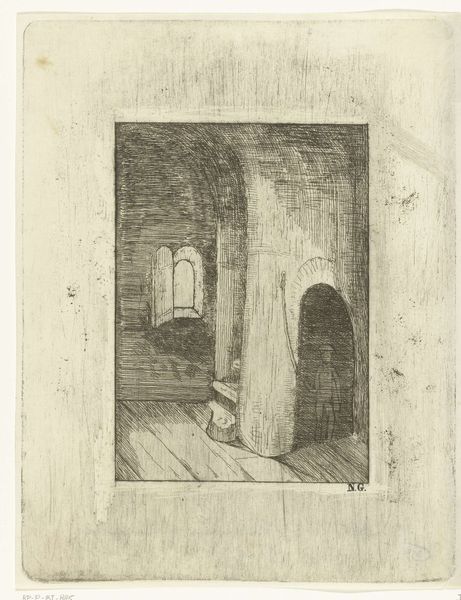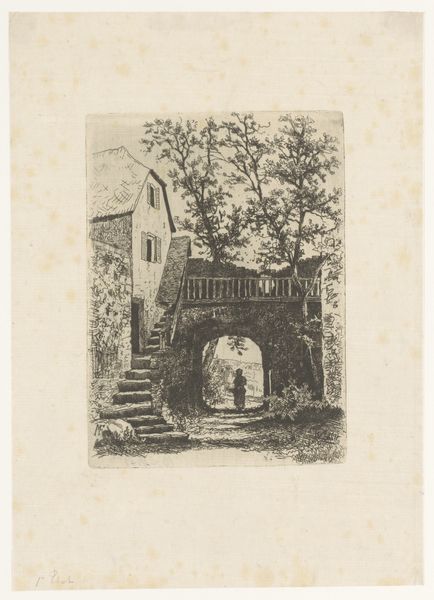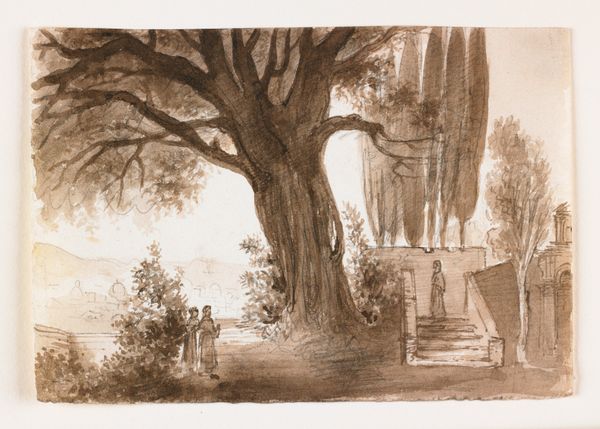
Dimensions: height 122 mm, width 263 mm
Copyright: Rijks Museum: Open Domain
Editor: This is Sir Francis Seymour Haden's "Mytton Hall," an etching from 1859, currently held in the Rijksmuseum. It has a really striking, almost theatrical composition with that dark doorway framed by the trees. What do you see in this piece? Curator: Formally, I observe a deliberate interplay between light and shadow. Haden uses etching to create a nuanced tonal range, directing the viewer's gaze from the foreground elements—those shadowy masses—towards the architectural form in the background. Consider the composition: the framing provided by the trees creates a proscenium effect, immediately placing the building as a subject of display, rather than of residence. How does the artist employ the use of negative space within this work? Editor: It seems to give the hall an imposing feeling, but also suggests a sense of mystery... Like we are discovering something. Is that accurate? Curator: Precisely. Notice the deliberate obstruction. The artist could have chosen an open vista. Instead, the layering and obscuring forms invite the eye to meander, delaying the revelation of the hall and activating the foreground as part of the scene's temporal experience. Think about the etching technique itself: the labor and precise pressure involved in producing these lines and tones through repeated submersion in acid, all serving a very precise and composed landscape! Do you observe the effects that come from looking at an engraving versus an actual place or event? Editor: The meticulous process must lend it a certain elevated grandeur. And because it's a print, that allows more people to experience that same elevated moment. Curator: A thought worth lingering on. What might we take away about Haden's project, given all of this? Editor: I didn't think about the distribution, or that that plays into it, so I learned that sometimes the art's circulation can become a compositional tool, too. Thanks! Curator: And I'm taking away the importance of initial impression when thinking about the temporal play that prints can represent.
Comments
No comments
Be the first to comment and join the conversation on the ultimate creative platform.
